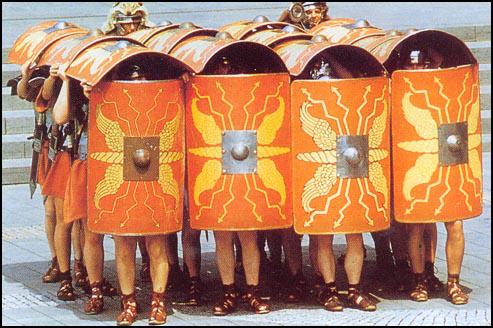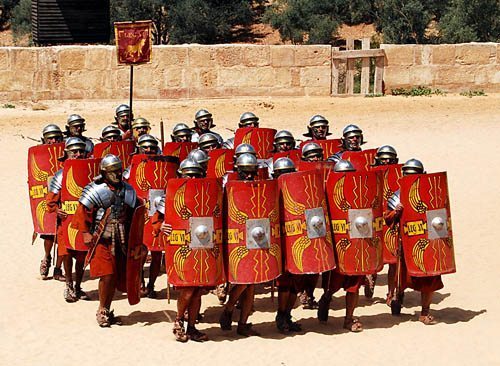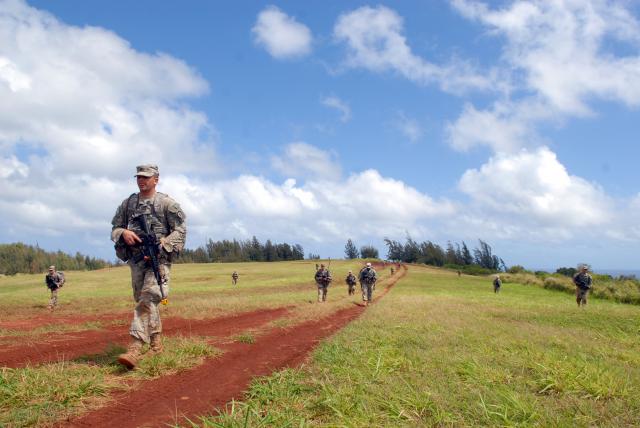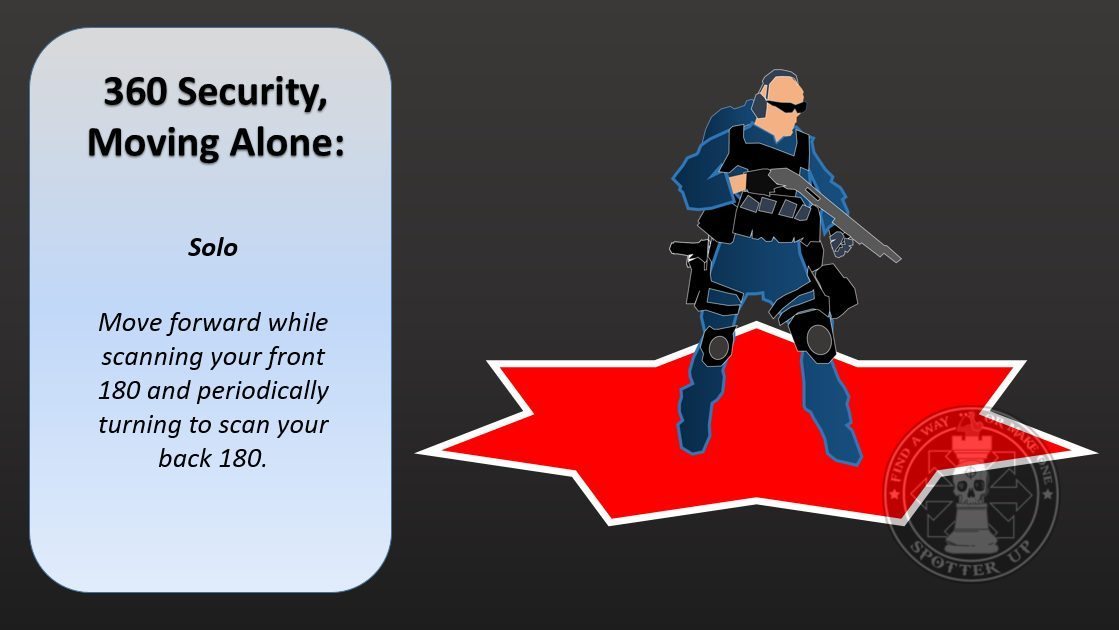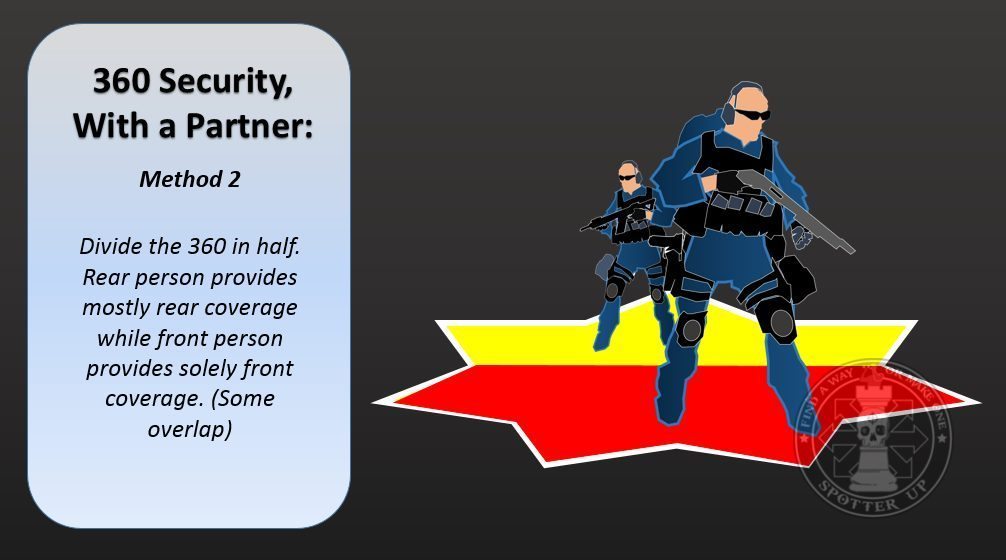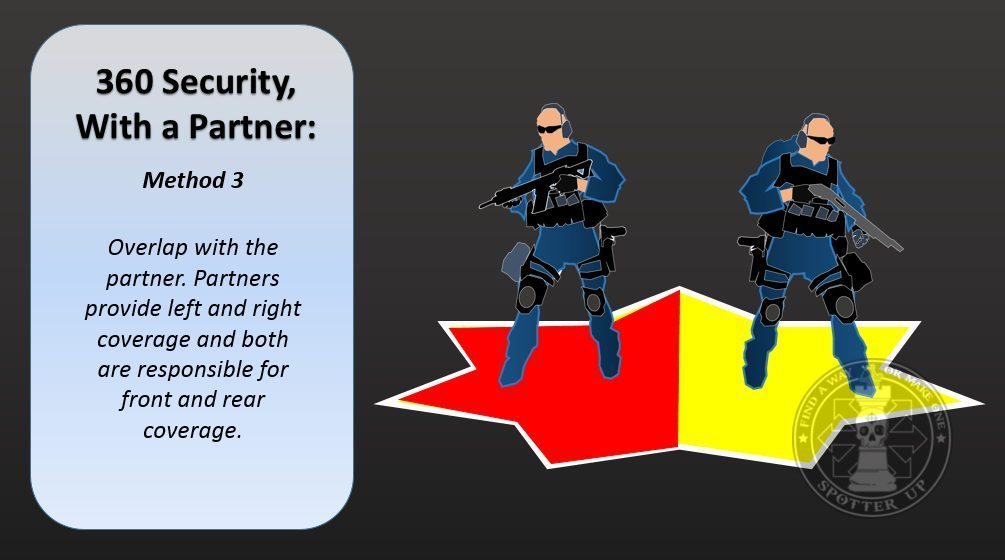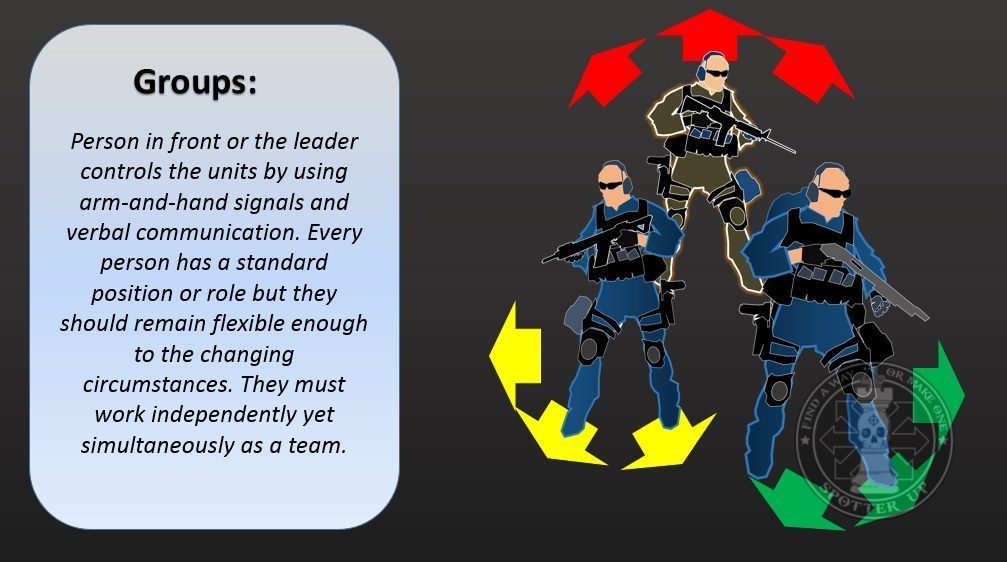In any dangerous situation you might not know where the threat will be, therefore it is important to use proper tactical movements. Imagine rushing into a fight without a plan. In this article we are going to lightly touch on 360 degree security and basic formations. Having a simple understanding of tactics is the first step in trying to stay safe.
But what does it mean to use tactics? The word tactic comes from the old Greek word taktika. It is defined as: matters pertaining to arrangement. To use a tactic is to take action to be in a distinct place and time in preparation for an undertaking. To use a tactic means to take an action to gain an end.
A strong tactical concept means having the general notion of using a combination of characteristics of movements in order to put yourself at the greatest position of advantage while keeping the enemy or suspect in the greatest position of disadvantage; he is unsafe and in a defensive posture while you are safe and on the offensive.
The word maneuver comes from the Old French maneuver for manual work or movement. I like to describe tactics as “finding a place to be”. Even when nothing is going on, the eyes, the ears and all of the other senses are working to keep you safe. In some scenarios you may have to keep your buddy safe.
If you want to learn how to put yourself in the position of advantage by using tactics, it’s best to start from the beginning by learning some basic tactical concepts. Having good 360 security means being aware of danger areas. Danger areas are things that you cannot see over, under, around or through. Danger areas provide cover and concealment to the bad guy in the form of walls, cars, trees, doors; they are objects that prevent you from knowing what potentially awaits you.
Second, as you travel you want to maintain 360 degrees of security; keep a mental check of the danger areas while moving with a purpose. Look left and right as you walk, observe the danger areas ahead of you, and look behind you from time to time.
Third, having a partner (unit) helps to accomplish the goal of maintaining a good 360 degrees of security. Divide and overlap the area of responsibility among each unit that makes up the group. A basic tactical formation is a good tool to help you obtain the best 360 degree coverage.
Fourth, spacing between you and your partner (unit) is dependent on the environment. Traveling through large open spaces (fields) or through narrow confined spaces (such as hallways) still requires you to be on the lookout for danger areas, observe objects that can provide cover and concealment, keep track of your partners’ whereabouts, and to utilize an understood form of communication. It is good to use communication and peripheral vision to alert your partner of your intentions.
- Traveling Solo: You must provide yourself 360 degree security when stopped or while on the move. As you move forward, scan your left and right flanks, to give yourself 180 coverage. Periodically turn around and check the back 180 as well.
- Traveling with a Partner:
- Partnered, Method 1: Divide the 360 coverage in half. There is a front and rear 180 degree coverage. You walk behind your partner or slightly offset. 360 degrees of coverage is created by each partner providing his own individual coverage, and simultaneously providing overlapping front and rear coverage for his partner.
- Partnered, Method 2: Divide the 360 coverage in half. There is a front and rear 180 degree coverage. You walk behind your partner or slightly offset. The rear partner provides most of the rear coverage while the lead person solely provides the front coverage.
- Partnered, Method 3: Divide the 360 coverage in half. There is a left and right 180 degree coverage. You walk side by side. One partner provides left-side coverage while the other partner provides right-side coverage. Each person’s area of responsibility overlaps with his partners.
- Partnered, Mutual Support: Each partner is responsible for their own security but they work together to attain 360 degree coverage. Allows greater distance between the two. Can split up and fight individually and harder to be tracked when split up.
- Partnered, Method 1: Divide the 360 coverage in half. There is a front and rear 180 degree coverage. You walk behind your partner or slightly offset. 360 degrees of coverage is created by each partner providing his own individual coverage, and simultaneously providing overlapping front and rear coverage for his partner.
- Traveling in Groups (3 or more people): The tactical concepts are the same for a large group as it is for a small group. The area of responsibility is smaller for each team member. The team leader can coordinate the rate and direction of travel. Group spacing is dependent on the environment; examples could be open and very hilly terrain, wide open plains or narrow hallways. Larger groups can split up into two groups or more groups or remain as one group .
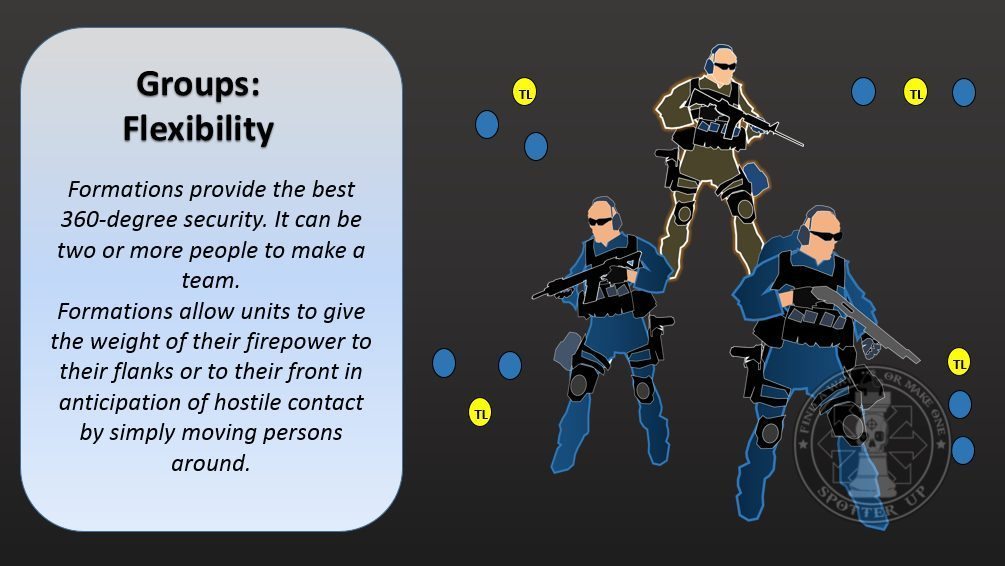
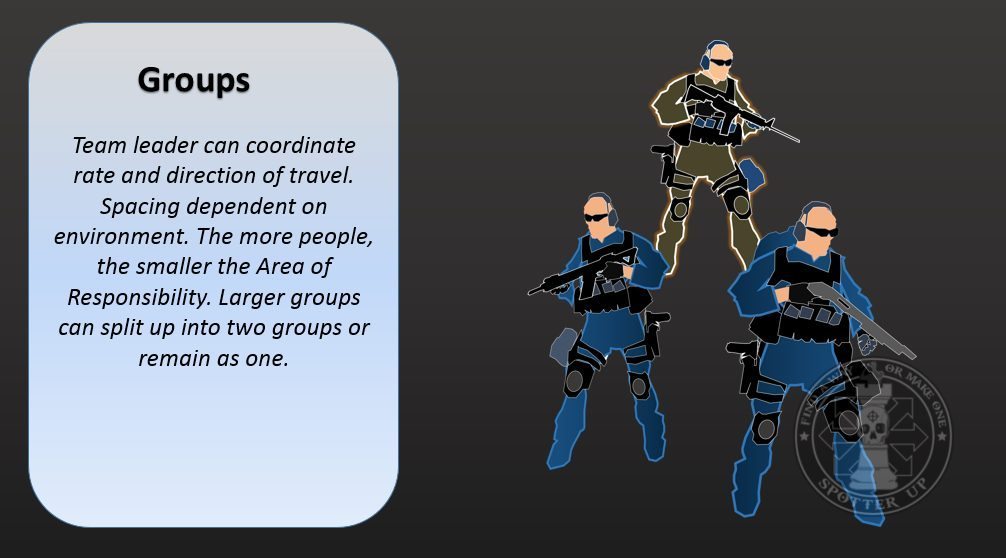
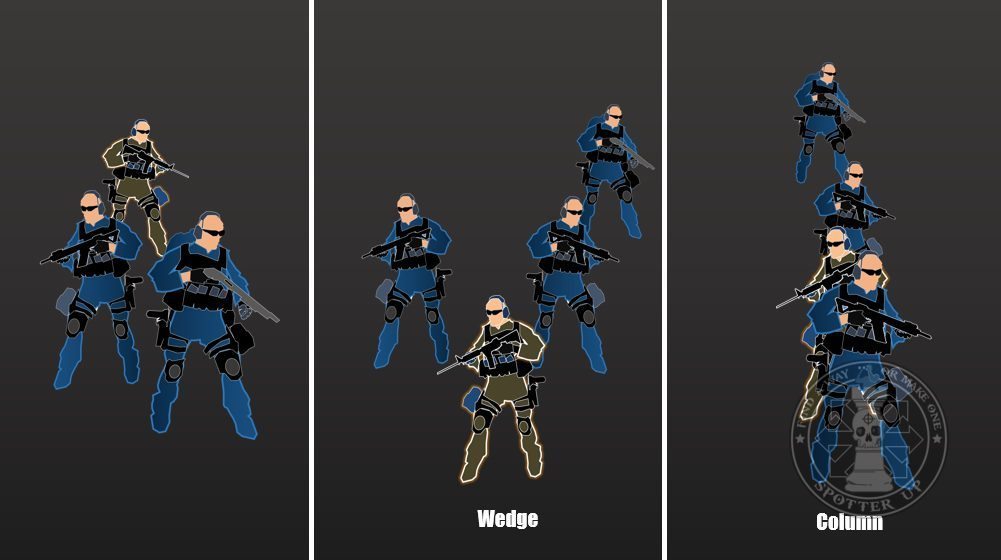
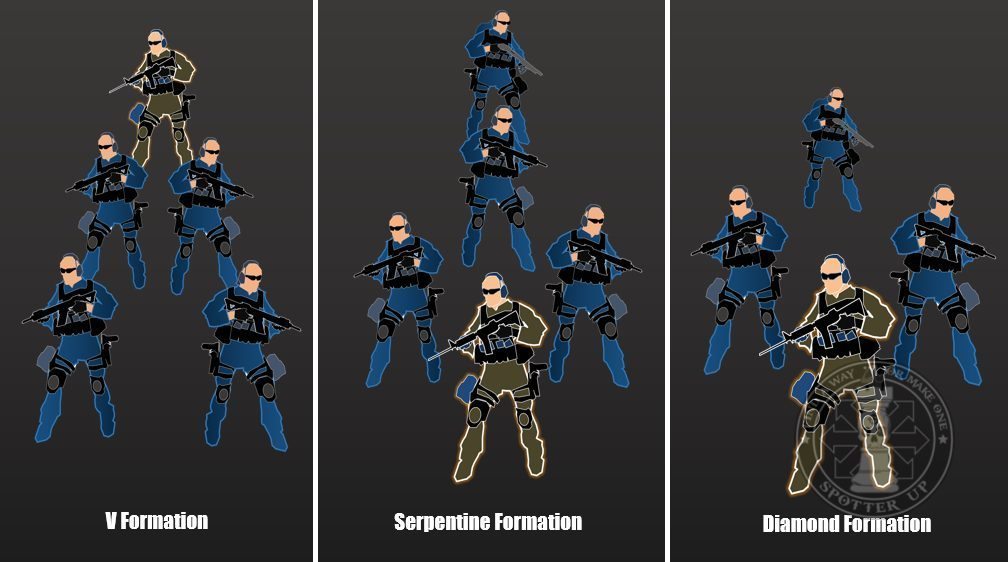

Some of the basic concepts to remember and practice:
- Always try to maintain 360 degree security
- Know who is responsible for each (AOR) area of responsibility
- Communicate with your unit member(s) verbally or with hand signals. Use your peripheral vision to look for danger areas and to keep apprised of your unit(s) movements.
- The person who is in front or the leader in front controls the units by using arm-and-hand signals and verbal communication. Leaders can be in the front, middle or to the rear of the formation.
- Formations are numerous.
- Every person has a standard position or role. Formations should be flexible and not rigid. Poor visibility, rough terrain, and other factors can change the kind of formation you use. Be malleable. Your adaptability to the environment provides the best 360-degree security. Flexibility allows you to anticipate a hostile contact. Each person can “plug” a gap in the formation by moving to where they are most needed.
Soldiers in formation as a solid bulwark. Photo by Ferrell Jenkins. http://ferrelljenkins.wordpress.com/2008/10/page/2/

